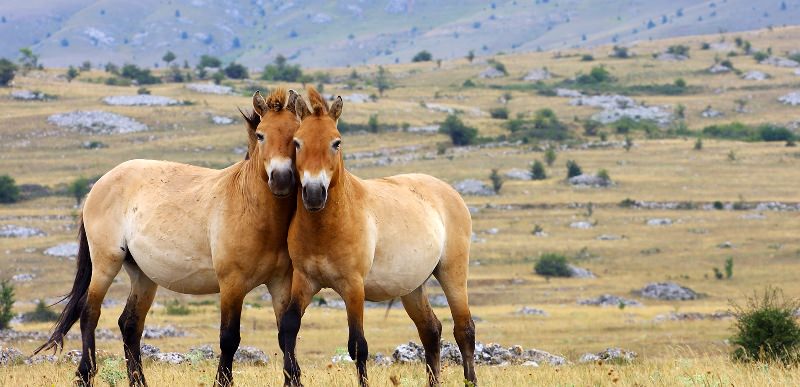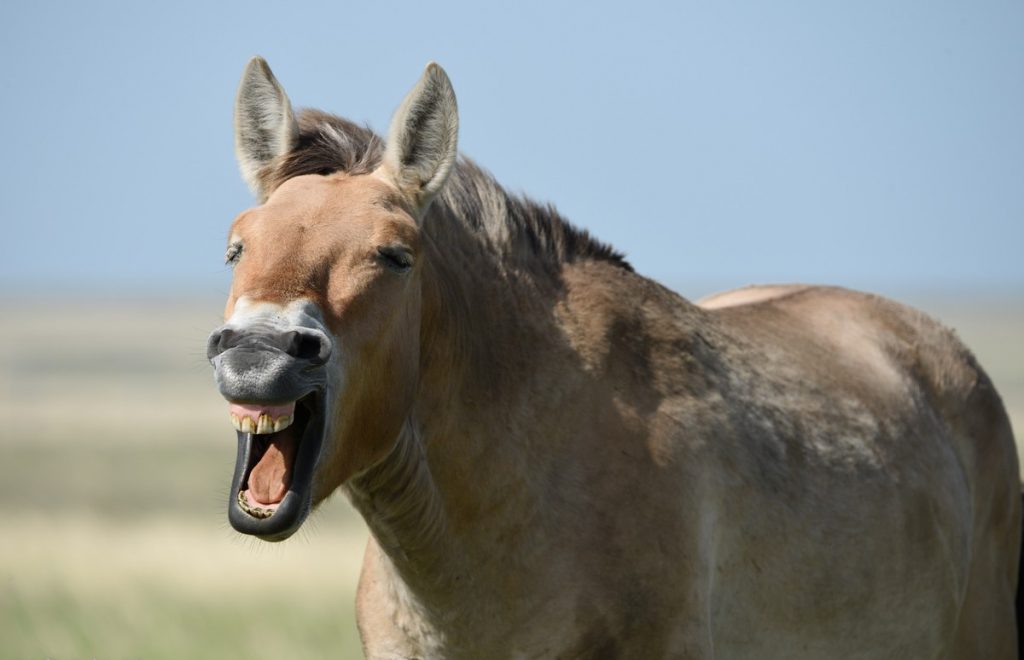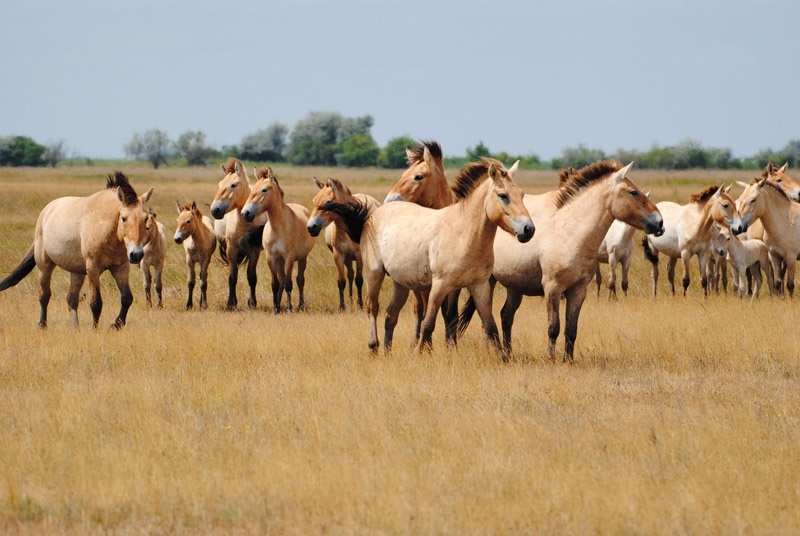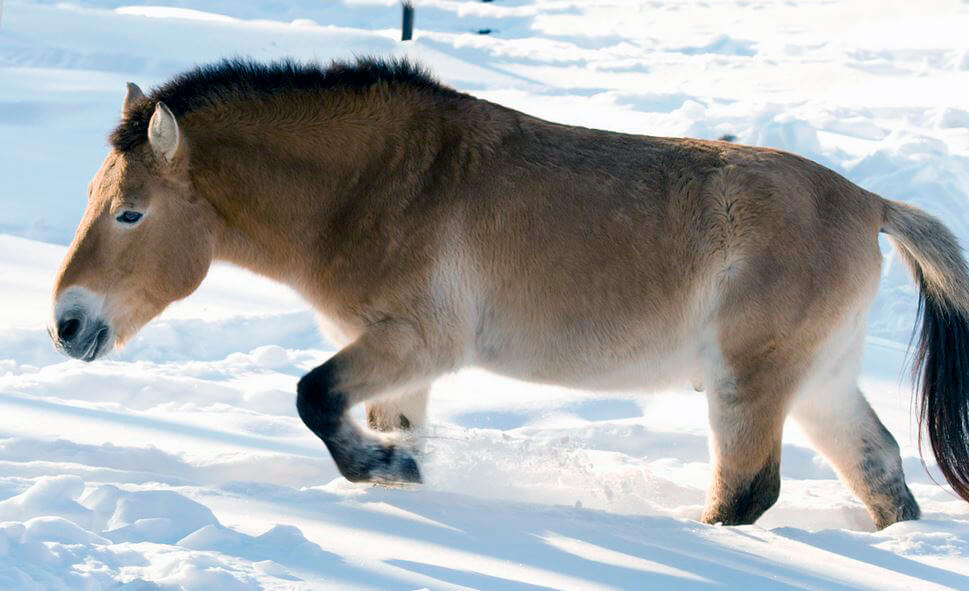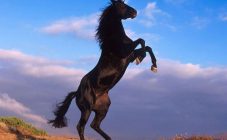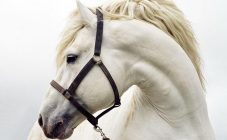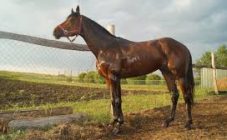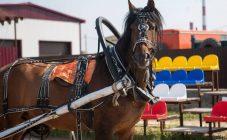Przhevalsky's horse was discovered by the Russian traveler and naturalist N.M. Przhevalsky. The story goes that this happened during the return of the scientists from the second expedition to Central Asia, when he decided to make a halt at the Zaisan post, in the area located on the border of China with Russia. There he was presented with the skin and skull of a wild horse from the merchant Tikhonov, who explained that the animal had been caught by local aborigines. Przhevalsky sent the remains for analysis to the Zoological Museum of St. Petersburg, where they said that they belonged to a hitherto unknown species. The scientist I.S.Polyakov, who studied them, first described the discovered breed in 1881 and gave the name in honor of the discoverer - Przewalski's horse.
Appearance
The constitution of a wild horse differs from its congeners by its warmer coat, hard skin and short, standing mane. Przewalski's horse is a graceful, beautiful animal. The head is larger in relation to the body compared to other horses. The horse has small but mobile ears, a thick, straight neck and a wide chest. The croup is almost oval in shape, the back is short in length with a weakly pronounced withers. Animals are hardy, with well-developed muscles. They are small in stature - from 125 to 155 cm approximately. In terms of its exterior, the horse is close to the riding breeds used in equestrian sports: races and competitions. However, the thick neck and large head bring them closer in appearance to ordinary domestic horses.
They have one color - sandy-yellow (savrasaya) with dark limbs. The mane and bangs are absent, a dark stripe stretches along the length of the back to the tail. On the legs, as well as on the tip of the muzzle, some individuals have white stripes.
Character description
Breeders note that this species was never fully domesticated by humans, therefore, it is considered wild. Such horses are wary of people. In a herd, young stallions often fight among themselves because of the fierce competition for "a place in the sun." If Przewalski's horse and riding horse come together in a fight, then the savage always comes out the winner.
The DNA results of the Przewalski horse showed interesting facts: it is not really wild, since scientists have identified genetic matches with the ancestor of the Botay domestic horses. Moreover, geneticists have proven that these species arose at almost the same time. Therefore, researchers believe that Przewalski's wild horses are just wild Botay horses. More detailed studies eventually came to regress due to the lack of genetic variation inherent in the general population of wildlings.
Przewalski's horse lifestyle
In nature, these graceful animals behave in different ways.
Herd organization
In the natural environment, 2 types of herds are usually formed:
- Socio-family herd from aboutone male horse, several females (10 - 15 on average) and small foals.At the same time, the herd is led by the oldest and most experienced mare, while the leader of the group closes the procession, vigilantly watching the situation from the outside, so that the predators could not unexpectedly get close and beat off the weakest members.
- A herd of stallions who were either rejected by the mares, or driven out by a stronger male during a fight. Often they are joined by older individuals, who were also expelled from the herd by a young competitor, in order to protect themselves from predators together.
Mares reach sexual maturity at the age of 3 years, stallions earlier - at 2 years. At this time they are driven out of the pack by the leader and form their herds, the so-called "bachelor groups".
They lead a nomadic lifestyle, they are able to travel long distances in search of food. As a rule, their movement does not differ in particular speed, but in case of danger they are able to move about 50 km / h. During the threat from predators, they form a circle, along the outer contour of which there are younger and stronger individuals, inside - small foals and old horses. They graze mainly in the morning, preferring to rest the rest of the time. To do this, they choose a hill with a good view, since horses have excellent hearing and scent, which is why they are a rather difficult prey for predators.
The diet
Animals are unpretentious in food. Most of all, in the natural environment, they prefer:
- feather grass;
- wormwood bushes;
- wild onions.
Animals consume less water than their species.
Habitat
The species comes from Asia. Some scientists place these wild animals in a separate group, Equus przewalskii, due to the distinctive set of chromosomes. If the domestic horse and its ancestors have 64, then Przewalski has 66. But their crossing is possible and gives offspring capable of further reproduction, while male hybrids of other species are not capable of reproduction.
To date, purebred wild individuals of Przewalski live only in nature reserves (Askania-Nova in Ukraine) and the Chernobyl zone, which today is their natural habitat. In Chernobyl, animals quickly adapted and multiplied well, until poachers began to exterminate them. Of the 200 heads in 2011, there were only about 40 of them.
There are about 2000 representatives of the Przewalski species in the world. They live only in special reservations and parks. The most famous such place is the Hungarian Hortobagy nature reserve. In China, reproduction of this species was started in 1985, progress was outlined in 2001 - in the region of Mount Kalamely there were already about 100 heads of them.
These animals were last observed in their natural environment, that is, in the wild, in Mongolia in 1969. According to the data, the number of horses began to decline sharply in 1944-1945. The reason for this was a particularly harsh winter, which prompted local residents to hunt wild animals, so as not to starve to death, since a lot of livestock died out during that period. The situation was aggravated by the fact that Chinese troops entered Mongolia. This provoked the appearance in the regions where horses lived, detachments of armed people who opened a real hunt for horses.
Today the species is on the verge of extinction and has been listed in the Red Book since the middle of the last century. Hunting for them is strictly prohibited. You can admire their beauty and grace only in nature reserves and national parks.
